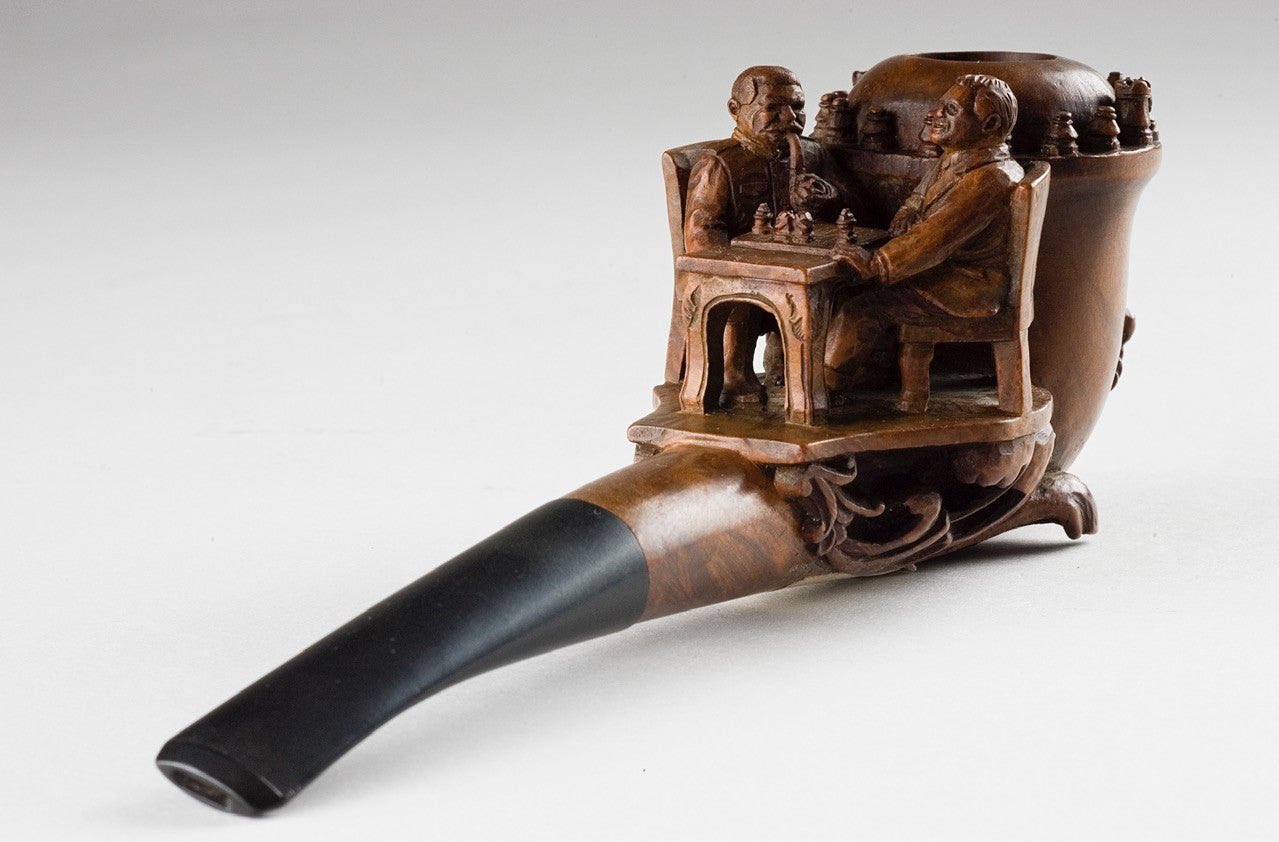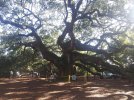You are using an out of date browser. It may not display this or other websites correctly.
You should upgrade or use an alternative browser.
You should upgrade or use an alternative browser.
Cool History Stuff
- Thread starter Rico
- Start date
About how old?
And where is it?Angel Tree Oak
Largest and oldest oak tree in the United States:
View attachment 29188
Beth and I visited it last year.
It's a big tree. ;-)
Got a magnet for our refrigerator and everything!
About how old?
Most experts place it at between 400-500 years old.
And where is it?
John's Island, near Charleston, SC. There is a lot of history to be seen on and around Charleston, if you ever decide to visit the right coast. I very much enjoyed our tour of the USS Yorktown. Pay for the guided tour. It's worth it if you like WW2 history.
As for the angel oak, well it's a big tree.
My wife and I were just in Chuckytown. I missed the Yorktown. But we did get out to Fort Sumter. Every American should have that experience.Most experts place it at between 400-500 years old.
John's Island, near Charleston, SC. There is a lot of history to be seen on and around Charleston, if you ever decide to visit the right coast. I very much enjoyed our tour of the USS Yorktown. Pay for the guided tour. It's worth it if you like WW2 history.
As for the angel oak, well it's a big tree.And by big, I don't mean tall. Plenty of trees around my house are taller, but the angel oak has a wide spread. It's THICC, as we arboreal aficionados like to say.

I did the Yorktown, the Laffey and the other ships tied up there. Patriot Point is pretty cool.Most experts place it at between 400-500 years old.
John's Island, near Charleston, SC. There is a lot of history to be seen on and around Charleston, if you ever decide to visit the right coast. I very much enjoyed our tour of the USS Yorktown. Pay for the guided tour. It's worth it if you like WW2 history.
As for the angel oak, well it's a big tree.And by big, I don't mean tall. Plenty of trees around my house are taller, but the angel oak has a wide spread. It's THICC, as we arboreal aficionados like to say.

While we are on the subject of trees, this one might be 5000 years old...https://www.theguardian.com/environment/2022/may/26/worlds-oldest-tree-cypress-chileAngel Tree Oak
Largest and oldest oak tree in the United States:
View attachment 29188
Beth and I visited it last year.
It's a big tree. ;-)
Got a magnet for our refrigerator and everything!
The Olive tree of Vouves in Crete, Greece (located in the small Cretan town of Ano Vouve) is probably the oldest olive tree in the world and it still produces olives.
It is confirmed to be at least 2000 years old based on tree ring analysis, but it’s claimed to be between 3000–4000 years old.
Talk about gnarly.

It is confirmed to be at least 2000 years old based on tree ring analysis, but it’s claimed to be between 3000–4000 years old.
Talk about gnarly.

I suspect that tree bark is harder than rock.
Why do you think they call it getting wood? Blue steel, a cat couldn't scratch it...I suspect that tree bark is harder than rock.
Tough olives maybe.The Olive tree of Vouves in Crete, Greece (located in the small Cretan town of Ano Vouve) is probably the oldest olive tree in the world and it still produces olives.
It is confirmed to be at least 2000 years old based on tree ring analysis, but it’s claimed to be between 3000–4000 years old.
Talk about gnarly.

My new insult: "That's just tuff olives, dude"! 
Last edited:
In 1945, the visiting US chess team gave Stalin a pipe depicting him and FDR playing chess.


You do see a few of the old trees around here still, even though the tendency is to go for newer stock every so many years. A few new, ground-level shoots are left to slowly become the new tree. The old guys do produce a lot of olives, they're just a bit harder to get to using newer methods (tree shaking machines, vibrating harvesting rods etc.)Tough olives maybe.
The traditional method is to place nets under the trees and use long poles to brush /beat the olives off. That's the black ones for oil. It's hard work but gratifying if you're going to get your own oil pressed at the "almazara" mill. Green olives for the table are more usually combed or picked off the tree. The words we use here for oil, olives and the mill "aceite"aceituna" "almazara" are all of Moorish origin and so Arabic. The tree "olivo" (and the English word for oil) comes from the Latin. Interesting to see the importance of the olive. Our generic words for oil come from this plant.
I saw a lot of olives in California that were grown like hedges, very close together. I guessed they were machine picked. Very different to here in Spain. In North Cal I did see some very old trees, somewhere near Redding, and loved it, they must've been planted maybe even 100 years back, not too sure. I regret not stopping to take photos and even maybe talk to the owners. There was an old settlers graveyard nearby so I know it was settled in the 1800s but I suspect the Spanish might have been there earlier, I really don't know.
If I can dig out old photos of harvesting, when I did still do it, and some nice big trees, I'll post them.
Last edited:
What a lovely piece!In 1945, the visiting US chess team gave Stalin a pipe depicting him and FDR playing chess.

You do see a few of the old trees around here still, even though the tendency is to go for newer stock every so many years. A few new, ground-level shoots are left to slowly become the new tree. The old guys do produce a lot of olives, they're just a bit harder to get to using newer methods (tree shaking machines, vibrating harvesting rods etc.)
The traditional method is to place nets under the trees and use long poles to brush /beat the olives off. That's the black ones for oil. It's hard work but gratifying if you're going to get your own oil pressed at the "almazara" mill. Green olives for the table are more usually combed or picked off the tree. The words we use here for oil, olives and the mill "aceite"aceituna" "almazara" are all of Moorish origin and so Arabic. The tree "olivo" (and the English word for oil) comes from the Latin. Interesting to see the importance of the olive. Our generic words for oil come from this plant.
I saw a lot of olives in California that were grown like hedges, very close together. I guessed they were machine picked. Very different to here in Spain. In North Cal I did see some very old trees, somewhere near Redding, and loved it, they must've been planted maybe even 100 years back, not too sure. I regret not stopping to take photos and even maybe talk to the owners. There was an old settlers graveyard nearby so I know it was settled in the 1800s but I suspect the Spanish might have been there earlier, I really don't know.
If I can dig out old photos of harvesting, when I did still do it, and some nice big trees, I'll post them.
Interesting. Here in the USA we don't have a lot of olive trees. What we do have is a lot of pine trees, and oak trees, and hickory trees, and poplar trees, and ash trees, and elm trees, and locust trees.
Unless you have the emerald ash borer, our city is in the process of cutting down 15000 ash trees because of the borer. My street was the first one they did and they cut down one in the ROW that was planted in 1958. My whole neighborhood will lose every ash in the city ROW, which is most of the trees along the streets. I have one in the center of my yard and although I had it touched up by a tree service last year, it is afflicted with the borer and it will have to come down within 3 years. One more plaque that originated in China.Interesting. Here in the USA we don't have a lot of olive trees. What we do have is a lot of pine trees, and oak trees, and hickory trees, and poplar trees, and ash trees, and elm trees, and locust trees.
Satellite TV before the space age! Stratovision, was a planned pan-American TV network, using 14 B-29 relay aircraft. It didn't progress beyond the trials seen in this image.


Saab 29 Tunnan Swedish fighter designed manufactured late 1940s. first Western European with swept wing post WW2. Despite its rotund appearance, from which its name is derived, the J 29 was fast and agile and served effectively in both fighter and fighter-bomber roles into 1970s.


Looks like a speedy Go Cart in the air...


























































































































